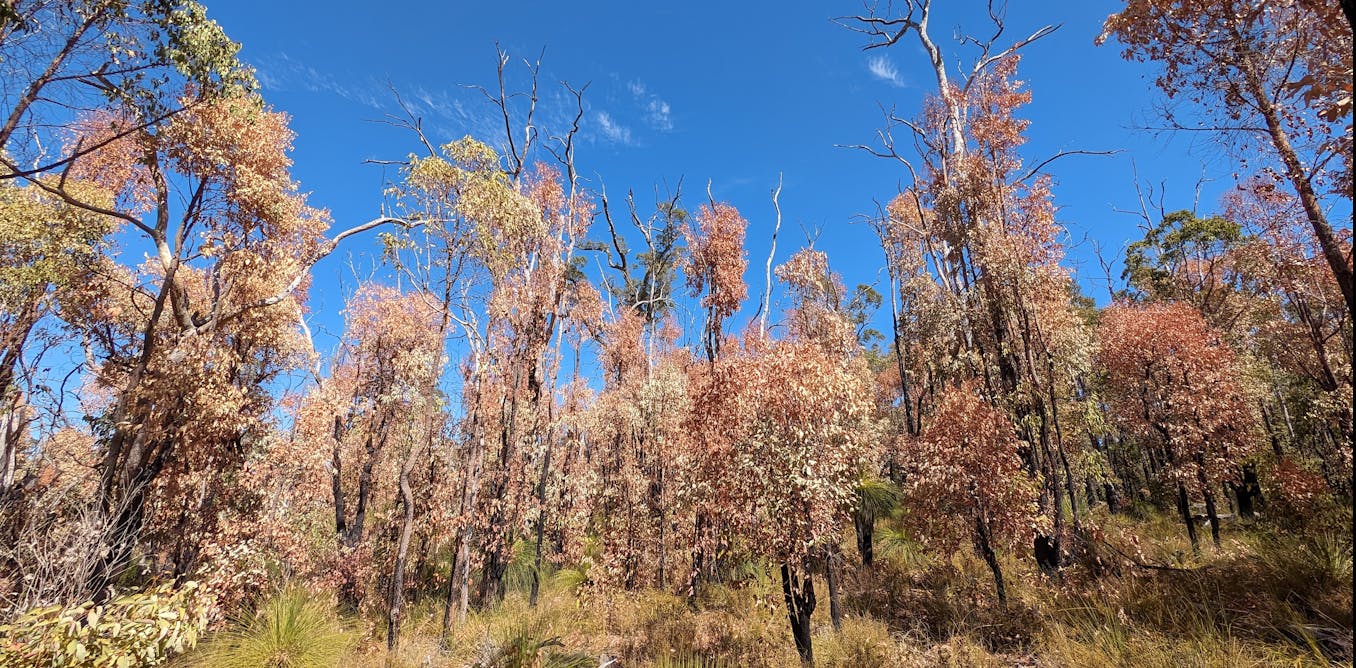
Trees more than a century old are barely alive. Some of these giant jarrahs might survive, but some won’t.
It’s a scene that’s being replicated in forests and coastal shrublands spanning more than 1,000km (620 miles) across the state’s south-west after drought and baking heat.
Many of these ecosystems are dominated by eucalypt trees such as jarrah and marri, and coastal shrublands spread with banksias, the likes of which are found nowhere else on Earth.
One of the earliest signs came in February when Perth’s street trees started dying after a record run of days above 40C. The city had its driest six months – from October to March – since records began.
There were similar scenes in the state’s south-west eucalypt forests in 2010 and 2011 – a die-back event that prompted more than a dozen studies. Drought-hit forests were hit by fire years later, releasing carbon dioxide, and raising concerns the forests could switch to become a source, rather than a store, of carbon.
Dr Mark Harvey, curator of spiders, millipedes and centipedes at the Western Australian Museum, says the south-west has hundreds of invertebrate species found nowhere else.
“The south-west corner of Western Australia has been isolated from other parts of the continent for the last three million years. That’s allowed species to develop in isolation.”
Those species have been used to moist conditions for many thousands of years, he says.
“We’re quite concerned about this drying event. If the animals don’t have a coping mechanism like burrowing to escape the heat, they literally die.
“They become locally extinct. They have nowhere to go. It will take thousands of years to recolonise, even if the habitat came good again. The prognosis is not good.”
The conditions in recent months are part of a distinct drying that scientists have seen in the region since the 1970s.
Compared with the period from 1901 to 1960, cool season rainfall in the last two decades has dropped by 20%. Very wet years have almost completely disappeared.
About half of this change has been blamed on rising greenhouse gas emissions, which could be an underestimate, according to one study led by Bureau of Meteorology scientists.
Even with rapid reductions in greenhouse gas emissions, the study suggested, the drying trend would probably continue for the rest of this century.
Dr Michael Grose, a climate scientist at the Australian government’s Commonwealth Scientific and Industrial Research Organisation, says as early as the 1970s scientists were seeing a drying trend.
“It is one of the clearest and strongest signals in mean rainfall anywhere in the world,” he says.